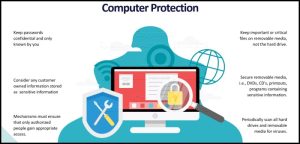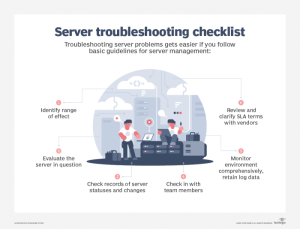
In a world where cyber threats loom large, understanding the top computer security threats is crucial for safeguarding your digital life. Get ready to dive into the realm of cyber dangers with a mix of wit and wisdom!
As we navigate through the various facets of computer security threats, you’ll unravel the mysteries behind potential risks and how to fortify your defenses.
Mobile Computing
In today’s digital age, mobile computing has become an integral part of our daily lives. With the convenience of accessing information on the go, it is crucial to prioritize security measures to protect our mobile devices from cyber threats.Mobile devices face a variety of security threats that can compromise sensitive information and personal data. Some common security threats include malware attacks, phishing scams, insecure Wi-Fi networks, and device theft.
These threats can lead to identity theft, financial loss, and unauthorized access to personal information.To protect their mobile devices from cyber attacks, users can take several proactive measures. One important step is to ensure that the device’s operating system and apps are regularly updated to patch any security vulnerabilities. Additionally, users should be cautious when downloading apps from third-party sources and only install apps from trusted sources like official app stores.
It is also essential to enable passcodes, biometric authentication, and encryption to secure the device and data in case of theft or loss.
Examples of Common Security Threats
- Malware attacks: Malicious software designed to disrupt, damage, or gain unauthorized access to a device.
- Phishing scams: Fraudulent attempts to obtain sensitive information, such as passwords or financial details, by disguising as a trustworthy entity.
- Insecure Wi-Fi networks: Connecting to unsecured public Wi-Fi networks can expose the device to hackers intercepting data transmissions.
- Device theft: Physical theft of the device can result in unauthorized access to personal information and data.
Computers Security

In today’s digital age, computer security plays a crucial role in safeguarding sensitive information and ensuring the smooth functioning of various systems. With the increasing reliance on technology for personal, professional, and organizational tasks, the need for robust computer security measures has never been more critical.
Types of Computer Security Threats
- Malware: Malicious software designed to infiltrate and damage computer systems, including viruses, worms, trojans, and ransomware.
- Phishing: Deceptive techniques used to trick users into revealing sensitive information such as passwords, credit card details, and personal data.
- Denial of Service (DoS) Attacks: Overloading a system or network to disrupt services and make them inaccessible to legitimate users.
- Hacking: Unauthorized access to computer systems or networks to steal data, disrupt operations, or cause harm.
- Social Engineering: Manipulating individuals into divulging confidential information through psychological tactics.
Best Practices for Enhancing Computer Security
- Keep Software Updated: Regularly install security patches and updates to protect against known vulnerabilities.
- Use Strong Passwords: Create unique, complex passwords for different accounts and enable two-factor authentication where possible.
- Implement Firewalls and Antivirus Software: Set up firewalls to monitor incoming and outgoing network traffic, and use antivirus programs to detect and remove malware.
- Be Cautious with Emails and Links: Avoid clicking on suspicious links or downloading attachments from unknown sources to prevent phishing attacks.
- Backup Data Regularly: Store important data on external drives or cloud services to mitigate the impact of data loss due to cyber threats.
Computers Software
When it comes to computer security, vulnerable software can be a major threat that cybercriminals exploit to gain unauthorized access to systems, steal sensitive data, or disrupt operations. Software vulnerabilities can create entry points for attackers to exploit, leading to security breaches and compromising the overall integrity of a system.Software updates play a crucial role in mitigating security risks associated with vulnerable software.
Developers frequently release updates to patch known vulnerabilities, improve system stability, and enhance overall security measures. Failing to update software regularly can leave systems exposed to potential threats and attacks.
Popular Software Vulnerabilities
- Buffer Overflow: This vulnerability occurs when a program writes more data to a buffer than it can handle, leading to memory corruption and potential execution of malicious code.
- SQL Injection: Attackers exploit this vulnerability by inserting malicious SQL code into input fields to manipulate databases and access sensitive information.
- Cross-Site Scripting (XSS): Cybercriminals inject malicious scripts into websites to steal data or hijack user sessions, taking advantage of vulnerabilities in web applications.
- Remote Code Execution: This vulnerability allows attackers to execute arbitrary code on a target system, potentially gaining full control over the system and compromising its security.
Computer Systems
Computer systems refer to the combination of hardware, software, and networks that work together to perform various computing tasks. These systems are at risk of security threats due to the vast amount of sensitive information they store and process.
Impact of Security Breach on Computer Systems
- Loss of sensitive data: A security breach can lead to the theft or loss of valuable information, such as personal data, financial records, or intellectual property.
- Disruption of operations: Cyber attacks can disrupt the normal functioning of computer systems, leading to downtime and affecting productivity.
- Financial repercussions: Dealing with the aftermath of a security breach can be costly, including expenses for recovery, legal fees, and potential fines.
- Damaged reputation: A security incident can damage the reputation of an organization, eroding trust with customers, partners, and stakeholders.
Strategies for Securing Computer Systems
- Implement strong access controls: Limit access to sensitive data and systems only to authorized users through secure authentication methods.
- Regular software updates: Keep all software and systems up to date with the latest security patches to address vulnerabilities.
- Use encryption: Encrypt data both at rest and in transit to protect it from unauthorized access.
- Employee training: Educate employees on best practices for cybersecurity, such as avoiding phishing scams and using strong passwords.
Computers Technology
Advancements in technology have revolutionized the way we use computers, but they have also introduced new challenges in terms of security. As technology continues to evolve, it is crucial to understand how these advancements impact computer security and the measures that need to be taken to safeguard sensitive information.Emerging technologies like Artificial Intelligence (AI) and Internet of Things (IoT) have brought about a new era of connectivity and automation.
While these technologies offer numerous benefits, they also create new vulnerabilities that cybercriminals can exploit. It is essential to stay ahead of these threats by integrating robust cybersecurity measures that can adapt to the changing technological landscape.
Impact of AI on Cybersecurity
- AI can be used to enhance cybersecurity defenses by identifying patterns and anomalies in network traffic, helping to detect and mitigate potential threats.
- However, AI can also be manipulated by cybercriminals to launch sophisticated attacks, making it essential to constantly improve AI algorithms to stay ahead of malicious actors.
- Integrating AI-powered tools into cybersecurity frameworks can provide real-time threat intelligence and improve incident response capabilities.
Role of IoT in Cybersecurity
- The proliferation of IoT devices has increased the attack surface for cyber threats, as these devices often lack robust security measures.
- Securing IoT devices requires a comprehensive approach that includes encryption, access control, and regular software updates to prevent unauthorized access.
- Integrating IoT security protocols with existing cybersecurity frameworks is crucial to protect sensitive data and prevent IoT devices from being used as entry points for cyber attacks.
Importance of Integrating Cybersecurity with Technology
- As technology continues to advance, cybersecurity must be an integral part of the development process to ensure that new technologies are secure by design.
- Collaboration between cybersecurity experts and technology developers is essential to identify potential vulnerabilities early on and implement effective security measures.
- Regular security assessments and updates are necessary to address evolving threats and ensure that computer technologies remain resilient against cyber attacks.
Computers Gadgets

In today’s digital age, computer gadgets have become an integral part of our daily lives. From smartwatches to fitness trackers, these gadgets offer convenience and connectivity. However, they also pose security risks that users need to be aware of to protect their personal data.Smart gadgets, such as smart thermostats, smart locks, and smart speakers, are vulnerable to cyber threats due to their internet connectivity.
Hackers can exploit these devices to gain access to sensitive information or even control them remotely. It is crucial for users to take proactive measures to secure their computer gadgets and safeguard their personal data.
Common Security Vulnerabilities in Computer Gadgets
- Outdated firmware and software: Regularly update the firmware and software on your computer gadgets to patch vulnerabilities and protect against cyber attacks.
- Weak passwords: Use strong, unique passwords for each of your devices to prevent unauthorized access.
- Unsecured networks: Avoid connecting your computer gadgets to unsecured Wi-Fi networks to reduce the risk of data breaches.
Tips to Secure Computer Gadgets
- Enable two-factor authentication: Add an extra layer of security by enabling two-factor authentication on your devices.
- Use a VPN: Protect your online activities and data by using a virtual private network (VPN) when accessing the internet on your computer gadgets.
- Disable unnecessary features: Turn off any unnecessary features or services on your computer gadgets to minimize potential security risks.
Outcome Summary
From mobile devices to computer gadgets, the landscape of cyber threats is vast and ever-evolving. By staying informed and implementing best practices, you can navigate this digital realm with confidence and security.
FAQ Compilation
How can I protect my mobile device from cyber attacks?
Ensure you use strong passwords, keep your device updated with the latest security patches, and avoid downloading apps from unknown sources.
What are some best practices for enhancing computer security?
Regularly update your software, use antivirus programs, enable firewalls, and be cautious of suspicious emails or links.
Why are software updates important in mitigating security risks?
Software updates often contain patches for known vulnerabilities, which can help prevent cyber attacks exploiting these weaknesses.
How do advancements in technology impact computer security?
While technology advancements bring convenience, they also introduce new security challenges that need to be addressed to protect sensitive data.
What are common security vulnerabilities in computer gadgets?
Weak default passwords, lack of firmware updates, and insecure network connections are common vulnerabilities in computer gadgets.






